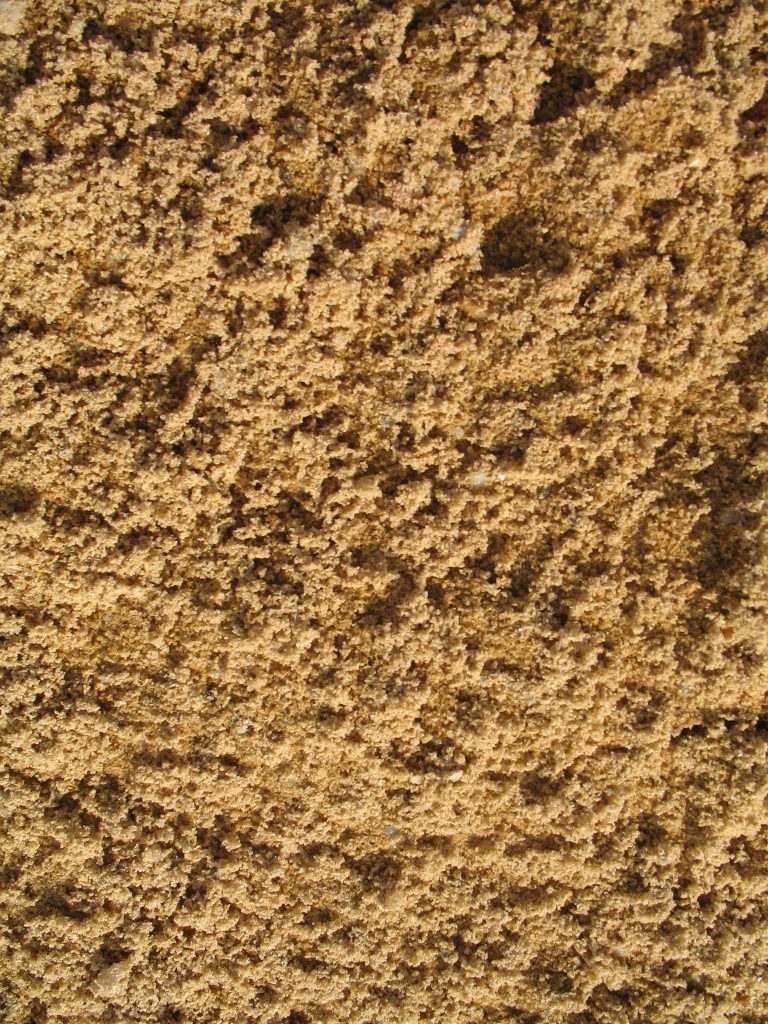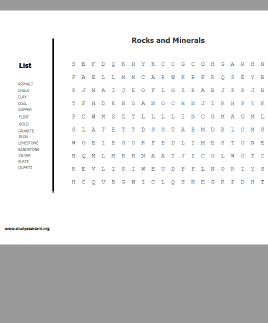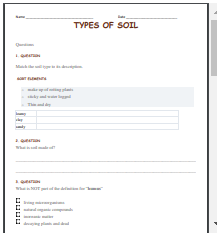Summary
Soil is a natural resource found on the earth’s surface. It is mainly composed of mineral, nutrients, water, air, other inorganic particles and residues of plant and animals (organic matter). Soil has layers.
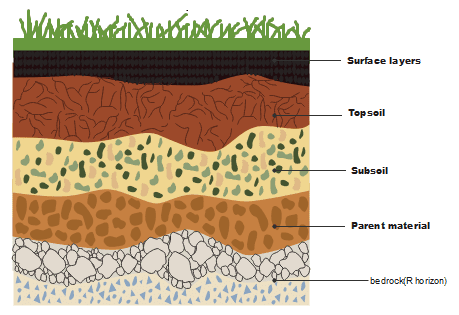
SURFACE LAYERS (O). This layer has dead plants and animal organisms that are slowly decomposing. Sometimes this layer is thick, sometimes it is thin; and others it may not be present.
TOPSOIL (A). This layer has humus, organic matter, roots, worms, insects, and other living organism, small rock and mineral fragments. It is dark in colour.
SUBSOIL (B). This layer has roots and other living organisms, materials leached by water from the upper layers, clay, rock fragments,and minerals. It is lighter in colour than topsoil.
PARENT MATERIAL (C).This layer comprises of materials leached by water from the upper layer and partly weathered rock fragments. It is somewhat orange and yellow in colour.
BEDROCK (R).A mass of rock such as granite, basalt, quartz, limestone or sandstone that forms the parent material for some soils.
Types of soil
There are six types of soil: sand, loamy, and clay, silt, peat, and chalk. The type of soil determines the growth of plant life.
Types of Soil
Sandy soil is light, warm, dry and tend to be acidic and low in nutrients. It has a high proportion of sand and little clay. The soil feels gritty to the touch. This type of soil has quick water drainage. During the dry season or summer this type of soil can lose nutrients and dry out rapidly. The nutrient and water holding capacity of this soil improves when organic matter is added to it.

Clay soil is a heavy soil that contains over 25 percent clay. It feels lumpy and sticky when wet. It can retain a lot of water, but get rock hard and dry out in hot weather. This soil drains slowly and so gardeners may find it difficult to work with. The gardener must ensure proper drainage so plants can grow well. This soil holds more nutrients than many other soils.


Loam soil is a mixture of sand, silt and clay. It is the perfect soil. These soils are fertile, easy to work with and provide good drainage. Soils with a perfect balance of particles, full of nutrients, are the best for gardening. However, this soil could benefit from topping with additional organic matter.
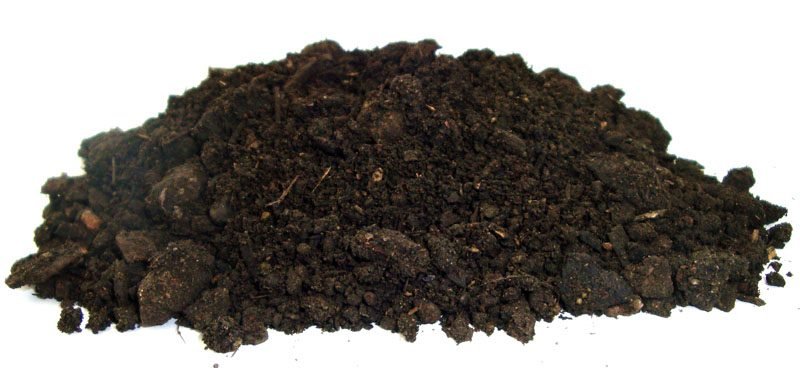
Silt soil is light but can retains moisture. It is smooth and soapy to the touch. It is richer in nutrients than sandy soil, easier to cultivate than clay, and heavier than soil. However, silt soil with fine particles is prone to washing away with rain. Silt soil benefit when organic matter is added.
Chalk soil is either light or heavy, but always highly alkaline (it has a pH of 7.5 or more) due to the calcium carbonate or lime within its structure. It s usually stony. This soil will not support growth of ericaceous plants (plants that grow best in acidic soil) that require acidic soils to grow.
You can test your soil to find out what type it is. Water an area of soil with a watering can. If surface water disappears quickly the soil is sandy or gravelly; but if the water remains longer on the surface it is clay soil. You can also touch the soil. Gently squeeze it; if it feels slimy and sticky and remains in as a lump when you release pressure, the soil is clay. If the soil crumbles in your hand easily it is sandy. Peaty soil feels spongy; loam and silt feel smooth and retain their shape longer than sandy soil, as it is not as rigid as clay.

An Experiment
Place a handful of soil from different places into large glass jars. Fill each with water. Stir well and leave to settle for two hours. Observe your samples and record what you see.
Remember: It is important to always wear gloves when digging, wash your hands after touching the soil, and never taste or smell the soil.
NOTES:
You can look through a magnifying glass to observe the soil.
Sandy soil has particles that sink and form a layer on the bottom. The water looks fairly clear.
Clay or silty soil have particles that sink to the bottom and form a think layer. The water looks fairly clear.
Peaty soil have small amount of sediment that settles and a lot of bits floating on the surface of the water. The water is a bit cloudy.
Chalky soil have layers of white gritty fragments on the bottom of the water. The water is pale greyish in colour.
Loamy soil have layered sediments that settles at the bottom of the water and very fine particles floating. The water is fairly clear.
What type of soil have you gathered?
From the soil we get minerals
Minerals are non-renewable natural resources obtained from the earth. The rocks in the earth contain minerals. These minerals have certain physical properties and definite chemical composition.
Minerals are used to build houses, schools, hospitals, shops, etc.

Lake Asphalt of Trinidad and Tobago

Extracting minerals from the land can severely damage the environment. The mining activities involves drilling, blasting, hauling, collection and transportation. Some of these activities have a huge impact on the environment. Some effects of the mining industry are: air and water pollution, loss of biodiversity, soil erosion, and formation of sink holes. Most countries have laws and environmental codes concerning mining, but it is still common to see many mining companies violating these rules.
Air Pollution
Unrefined materials such as lead, arsenic, cadmium, are released when mineral deposits are bought to the surface. These toxic elements can damage our respiratory system and cause allergies.

Water Pollution
Mining can cause water pollution. Processing plants release sediments into the water; this accounts for much top sources of water pollution. It affects mainly irrigation, swimming, fishing and domestic water supply. Mining causes an increased acidity in the water which destroys living organisms and corrode culverts, piers, boat hulls, pumps and other metal equipment .
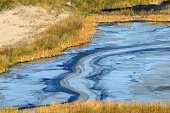
Effect on Land
Mining operations have caused much physical destruction of the land at the mining site. Mining destroys the surface features which leads to deforestation. Deforestation can lead to loss of habitat for their flora and fauna. This disruption in habitat place some wildlife species at risk of extinction. For example: the cement mining companies in Malaysia are placing a rare species of snails close to extinction due to limestone quarrying. The soil also can become contaminate from chemicals spills and residues.

Conserving Minerals and the Environment
Governments should be motivated to protect the environment from unplanned mining. A sustainable use of the environment involves recycling, reuse, and conservation of energy and mineral resources. Finding use for unwanted materials is an important goal.

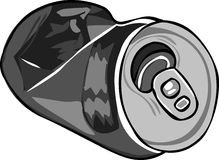
Aluminium can be recycled continually. Aluminium is melted down and reformed. The process saves around: 95% of the energy needed to make the metal from raw material and 95% of the greenhouse gas emissions compared to the primary production process. Many products are formed using aluminium: drink cans; aerosols, foil, food trays, wrappers, bottle tops.
How aluminium is Recycled
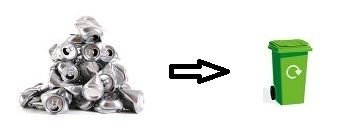



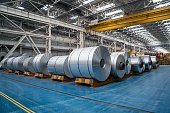
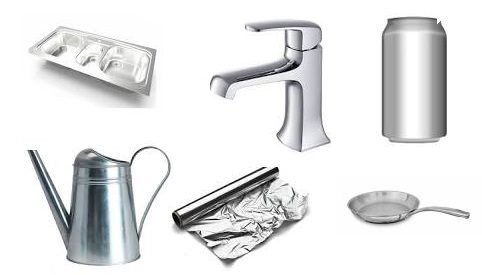
Video: How are aluminium cans recycled?
Picture source

